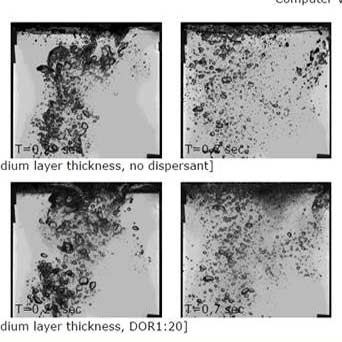
Quantitative investigation of oil-layer resistance to entrainment
Our research group at Wageningen University is working on studying the effects of dispersants on the fate of oil in realistic conditions.
The poster in the link below presents the preliminary results of a plunging jet method combined with a high speed camera to obtain quantitative data of the entrainment of oil under different circumstances. Our plunging jet measurement system consists of a holding tank containing 9 liters of seawater.
A specific amount of oil is placed within a confinement on the surface so the height is known. The plunge container is a 250 ml glass container and its height can be varied with a rig. A high speed camera that is fixed to the rig, perpendicular to the holding tank, records the underwater events after the plunge hits the oil slick. A backlight behind the tank enhances oil droplet contrast.
The volume and droplet sizes of oil in the water column are registered over time and quantified using image processing software. The resulting (projected) surface of each individual particle is converted to droplet size assuming the droplets are spherical. This poster presents the preliminary results of a plunging jet method combined with a high speed camera to obtain quantitative data of the entrainment of oil under different circumstances.


